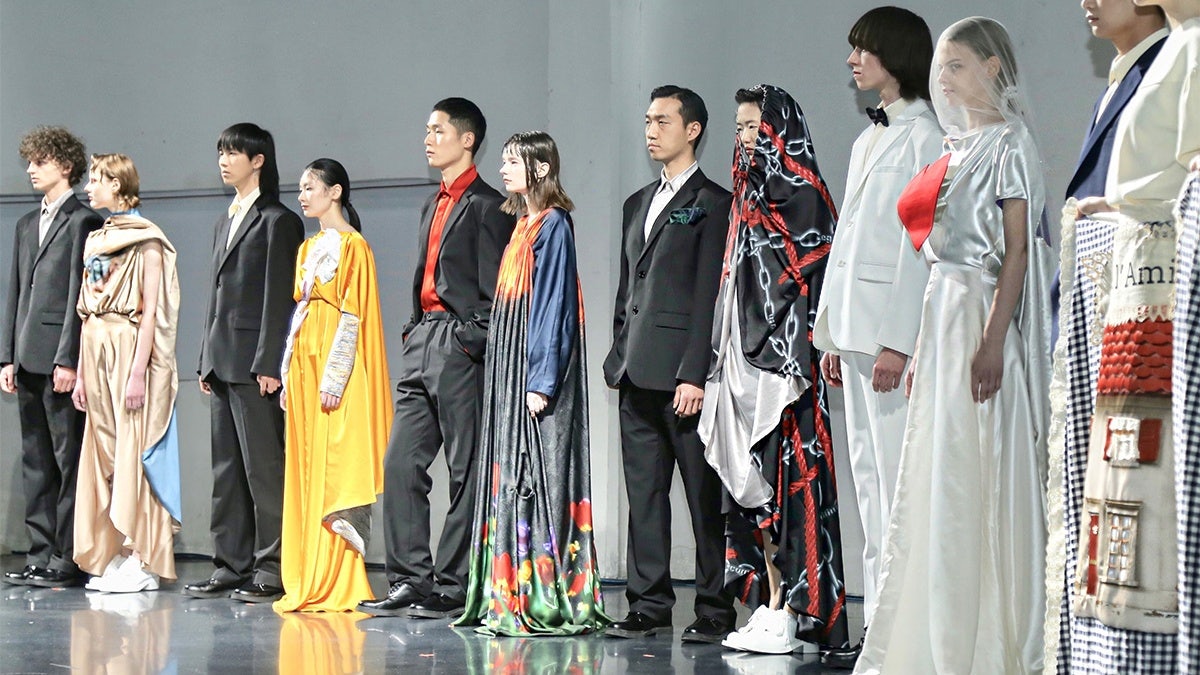For a number of years, Shanghai Fashion Week had been growing its reputation. Touted by many as the newest global capital of fashion creativity, it has transitioned into a key landmark on the fashion week schedule. Eclipsing Seoul and Tokyo, the city has been nudging its way towards the mainstream, perhaps even a contender to join the big four.
On February 10, however, this expansion was put on pause. In light of continued uncertainty around COVID-19, Lv Xiaolei, who’s better known as Madame Lu, and the Shanghai Fashion Week Organizing Committee took the unprecedented decision to postpone its biannual event — the most important fashion week in Asia. While its uncertain how long the event will be in limbo, the industry on the ground is left grappling to cope as best it can amid shop closures, factories on shut down, empty streets, and vivid memories of the SARS epidemic.
As the outbreak continues to spread, fellow fashion week, China Fashion Week, based in Beijing, has also been put on hold. Luxury brand Chanel has also canceled its show earmarked to take place in Beijing this May but Burberry has yet to comment on it’s upcoming event in April. A spokesperson for the World Health Organization, Tarik Jašarević in Media Relations, is adamant that national authorities make decisions about these types of issues “based on their assessed risk of holding the event in their country.” Similarly, he continues, “companies and other organizations are at liberty to make their own decisions according to their specific circumstances and their assessment of the risk to business.”
As a platform which caters to hundreds of designers and brands, both in tradeshows and on runways, as well as thousands of guests, the enormous impact of the decision is not to be underestimated. Milan Fashion Week was more recently impacted as the domino effect spreads across Asia, and now Europe, with events far into the future are being abandoned. With no end point in sight, it’s impossible to know if these cancellations lie at the supply or demand end of the issue — would guests actually attend if they could go ahead? Meanwhile, critics globally are calling for an overhaul of the entire fashion week system as a whole. Under these challenging circumstances, is there a possibility for Shanghai Fashion Week to find a dynamic new solution that reinvents the nature of fashion weeks?
One solution might be to go digital. In recent years, the carbon footprint — in particular of shows and fashion weeks — has been called out by the industry. The global environmental movement, Extinction Rebellion, has been particularly vocal on the topic and has been increasing it’s pressure on London Fashion Week for one, to rethink how it operates. Bel Jacobs, spokesperson for Extinction Rebellion Fashion Action, explains: “According to a recent report, the travel undertaken by buyers and brands resulted in about 241,000 of CO2 emissions a year so any attempt by any fashion week to go digital would of course be welcome.”
As the Shanghai platform emerges in global importance, it represents the most powerful consumer base and production center in the world. “If the organizers [of Shanghai Fashion Week] were to embrace the digital format, rather than fly fashion editors in from every corner of the globe, the significance would be enormous. This is particularly true, if it was made clear from the outset that the decision was made in light of carbon emissions and the climate emergency,” Jacobs adds.
Given the omission of many Chinese designers’ shows this season, companies such as Tomorrow, a multi-service business accelerator for brands, have been thinking of new ways to introduce more Chinese talent to Paris Fashion Week this season in a show of support. “It’s not just for business purposes but exposure is so important to these young Chinese talents right now,” says Julie Gilhart, Chief Development Officer, at the company.
She continues, “The silver lining here is we are forced to think about new ways of communicating and doing business across long distances.” Gilhart, a regular visitor to China’s fashion capital, is optimistic about the possibilities for an upsurge in digital for the event however. “Obviously with the use of technology, we should use this time to figure out how we might create new, sustainable ways of executing fashion weeks and all the selling presentations that surround these times,” she explains.
This year, Finland’s fully sustainable interdisciplinary fashion event, Helsinki Fashion Week, is building on its Ecovillage concept by launching a Designer-in-Residency program, which aims to film and livestream designers’ processes daily. “Adding more digital aspects to the event is something that Shanghai could take into consideration given there is so much preference for digitization over there from Governmental positioning to consumer preference,” Evelyn Mora, the founder of the event, outlines.
Aside from important sustainability credentials and wider ecological benefits, if Shanghai Fashion Week went digital, it would provide a layer of access and transparency to China's emerging designers and creatives. This new digital aspect would likely be a tie-up with one of the two big e-commerce players on the mainland, Alibaba or JD.com. These local fashion conglomerates have steadily transformed domestic fashion on the mainland, but independent designers are truly raising the industry's profile and reputation globally. In cases where corporations like Alibaba and JD.com have provided a platform for the smaller designers, the impact is only raised. With the added support of Shanghai Fashion Week, we can begin to see the potency for Chinese fashion to increase its reach.
Given the vast size and variety of designers at the fashion week, if the organizing committee implemented a similar live-stream access to studios — already a hot topic in China — this would raise the bar for how digital experimentation and innovation could be introduced among other global fashion weeks and events. As the home of digital innovation, China should apply this idea to the upcoming schedule. Just as Milan and Paris Fashion Week organizations are creating strong digital connections with China as it skips the season, this is the ideal moment for China to export its own designers globally, via cyberspace.
As we witness engineers and builders construct a hospital in days, Professor Patrick Gottelier, from the Shanghai Institute of Visual Arts, reminds us that this is a country that has developed the biggest online shopping network the world has ever seen. He is livestreaming his lectures from Sri Lanka, unable to be in China at the moment, but is incredibly upbeat. “Now, China has the opportunity to create the best, most exciting, farthest reaching, viral virtual fashion week that would leapfrog it into fashion’s pole position in one season.” As an industry, we can only await in anticipation.

